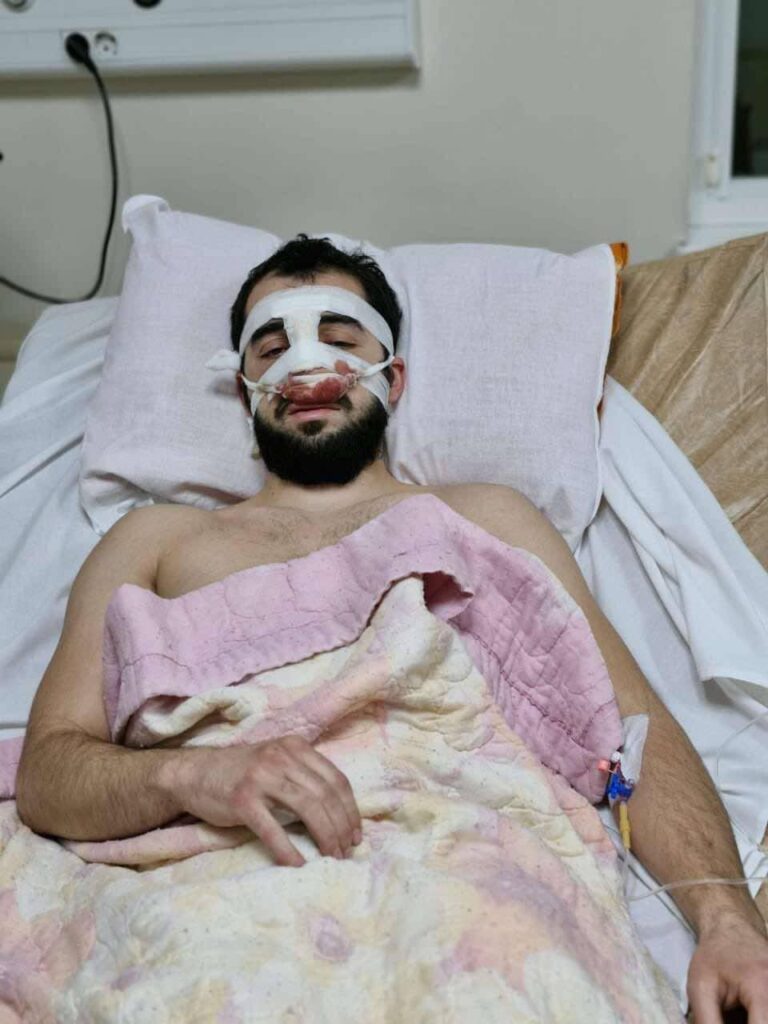On the fifth day of pro-EU demonstrations in Georgia, Transparency International Georgia and the Georgian Young Lawyer's Association stated that police used excessive force and purposeful violence against anti-government protesters, with detainees reporting systematic beatings and torture in police custody. The Georgian police's brutality could originate from training in police violence received by Russian counterparts, according to prominent Kremlin critic Alexander Nevzorov.
If proven, Georgia would be the next country to which Russia exported its authoritarian playbook, in which torture methods among law enforcers become a method for suppressing democracy and civic engagement. The stakes could not be higher: ongoing protests against the ruling pro-Russian government's announcement of postponing integration with the European Union are seen by many protesters as their last chance to resist their country's drift into the Kremlin's orbit.
Rights observers document police brutality
Transparency International reported that detained protesters suffered severe beatings both during and after arrests on 2 December 2024. At least six special forces officers participated in coordinated violence inside police minibuses, with superiors directing them to target specific body parts including the liver and head. Many detainees sustained serious injuries including fractured noses and jaws, concussions, and extensive bruising.

"The officers alternated with each other during the violence and discussed breaking the detainees' arms or legs," Georgian Young Lawyer's Association GYLA reported, noting that an older supervisor ensured no fatalities occurred during the beatings.
The violence was so severe that blood covered the minibus floors, with one detainee's raincoat becoming soaked. An older supervisor monitored the torture to ensure no fatalities occurred. After the minibus beatings, detainees were forced to walk through a corridor of special forces officers who kicked them in the face and back before transfer to police patrol cars.
Officers stripped detainees of their shoes, forcing many to walk barefoot to medical facilities. They also confiscated mobile phones and coerced detainees to remove passcodes. The detainees reported being spat on and subjected to degrading verbal abuse, including threats and homophobic slurs.
Corroborating the troubling reports, Georgian Public Defender Levan Ioseliani announced that 124 out of 156 detainees visited alleged police brutality and inhuman treatment. "It’s almost 80%. This is a very concerning figure," Ioseliani said.
GYLA expressed particular concern about police tactics of "encircling protest participants" and not allowing citizens to freely leave during dispersal operations. The organization also noted the use of tear gas in enclosed spaces and chemicals in water cannons.
Euromaidan Press reported about the chemically-laced water, which causes burning sensations in the eyes and breathing difficulties, here.
Corroborating GYLA's warning, protesters report a shift in police tactics from crowd dispersal to targeted attacks on individuals. According to participant Marika Mikiashvili speaking with Euromaidan Press, police units were strategically positioned on side streets off Chavchavadze Avenue in the Vake district to intercept protesters attempting to flee the main demonstration area.
"They hunt them," Mikiashvili said, describing how police squads waited in ambush on escape routes to "beat them and catch them." The witness noted this targeted pursuit of individual protesters, even in side streets during morning hours, represents a new development in police tactics.
Police brutality as a linchpin in the "ecosystem of dictators"
The police tactics show signs of coordinated planning and specific targeting methods. According to Alexander Nevzorov, a prominent Russian journalist and Kremlin critic in exile, these brutal tactics bear hallmarks of Russian training.
"Georgians did not expect that their own police would show so much sadism. They did not consider that their cops are being trained by Russian specialists," Nevzorov said in a recent YouTube broadcast, as quoted by Formula News. "All protests are suppressed by Russian rules which include inflicting injuries, including in the head of the protestors, necessity of group beatings and so on."
This pattern of police brutality mirrors tactics documented in other countries within Russia's sphere of influence. According to Nicaraguan democracy advocate Felix Maradiaga, Russia has become a model for authoritarian states, pioneering repressive mechanisms and legal frameworks for persecution.
"It's not only Russian propaganda. No, it's training. They're training all these people in intelligence measures. They're training in torture methods," Maradiaga told Euromaidan Press.
This "ecosystem of dictators" extends beyond police training to include surveillance technology sharing and coordinated legal frameworks. Countries including Venezuela, Cuba, Bolivia, and Nicaragua have adopted laws regulating journalism, cybercrime, and national security that are "copy-pasted from Russia's," according to Maradiaga.
The collaboration between authoritarian states includes China providing funding, Iran contributing radical ideology, and Russia leading in repression expertise. These regimes reinforce each other through shared training, intelligence gathering, and propaganda efforts aimed at suppressing democracy movements worldwide.
Related:
- Ukraine’s fate will determine future of global democracy, says Nicaraguan freedom champion
- Georgian police admit possible chemical use in water cannons as protesters report tear gas symptoms
- Georgia's Maidan Moment: Tbilisi rises against Russian influence





